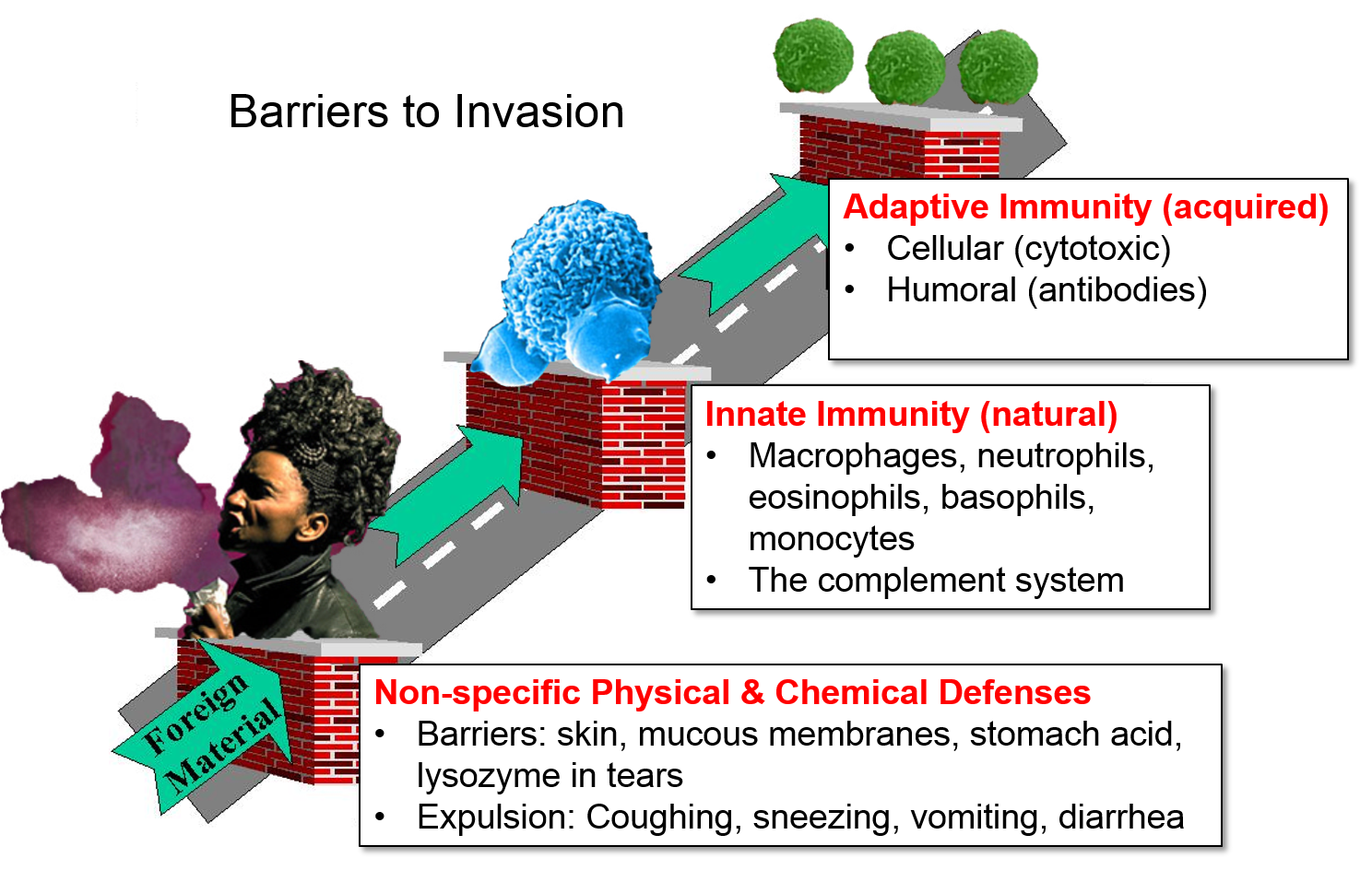General, Non-specific Defenses Against Infection
There are several simple physical and chemical barriers that constitute and important first line of defense.
Our skin provides a highly effective barrier to infectious agents despite the fact that skin is colonized by an impressive array of microbial agents. Injury to the skin (abrasions, cuts, incisions, burns, etc.) or penetration.(insect bites, splinters, needle sticks, stabs) can, of course, breach the barrier and provide a portal of entry for infectious agents.
Given the effectiveness of intact skin, our major vulnerabilities are:
- The respiratory tract: we take air from the external environment into our respiratory tract and lungs continually - every minute, every hour, every day, as long as we live.
- The gastrointestinal tract: we eat and drink every day, and this provides another potential portal for entry of pathogens.
- The genito-urinary tract: the urethra and vagina are potential portals for entry of microbes, especially during sexual encounters
- Even the eyes provide a portal of entry
These are our major vulnerabilities, but we have evolved non-specific defenses for these.
- The mucous membranes of the eyes are bathed in tears, which contain an enzyme called lysozyme
 that attacks bacteria and helps protect the eyes from infection.
that attacks bacteria and helps protect the eyes from infection. - The hairs and mucus in our nose trap inhaled particles, and the walls of our respiratory tract are lined with cells that secrete mucus to trap particles and pathogens.
- The cells lining the respiratory tract have cilia, hair-like projections that beat in a coordinated way to sweep mucus and entrapped particles up to the pharynx, where it can be swallowed or expectorated.
- Coughing and sneezing can be thought of as mechanical means of expelling pathogens and noxious chemicals
- Our digestive tract also provides barriers. Acid in the stomach and enzymes in the intestine destroy pathogens. The gastrointestinal tract also has cells that secrete mucus, which acts as a barrier.
- The gastrointestinal tract is also surrounded my smooth muscle cells that propel the gastrointestinal contents in a wavelike fashion referred to as peristalsis. Noxious gastrointestinal contents can be expelled by diarrhea, which involves both increased flushing from secretion of fluid into the GI tract and increases peristalsis. Vomiting is a complicated reflex that provides another means of expelling noxious materials
- The urethra is periodically flushed by urine.
- The acidic pH of the vagina makes it inhospitable for many pathogens.
- Biological barriers: The normal bacteria on our skin and in our respiratory, digestive, and uro-genital tracts protect us by competing with pathogens for attachment and essential nutrients.
The video below shows cells lining the bronchial portion of respiratory tract. The cells have hair-like projections (cilia) that beat rhythmically. The coordinated beating sweeps dust and pathogens trapped in the mucus layer back up the respiratory tree to the pharynx, where it can be either swallowed or expectorated.
Source: http://www.youtube.com/watch?v=1yEVrJxQTV0
These non-specific barriers are extremely important, but they represent just the first line of defense. The innate and adaptive immune systems provide additional important barriers to infection.


